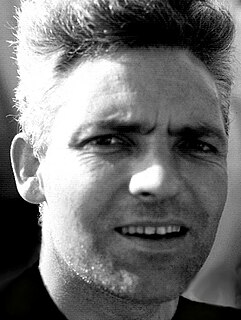
Caen is a commune in northwestern France. It is the prefecture of the department of Calvados. The city proper has 108,365 inhabitants, while its urban area has 420,000, making Caen the largest city in former Lower Normandy. It is also the third largest municipality in all of Normandy after Le Havre and Rouen and the third largest city proper in Normandy, also after Rouen and Le Havre. The metropolitan area of Caen, in turn, is the second largest in Normandy after that of Rouen, the 21st largest in France.

Les Andelys is a commune in the northern French department of Eure, in Normandy.

The Church of Saint-Pierre is a Roman Catholic church located on the Place Saint-Pierre in the centre of Caen in Normandy, northern France. It is dedicated to Saint Peter.

Bertangles is a commune in the Somme department in Hauts-de-France in northern France.

Folleville is a commune in the Somme department in Hauts-de-France in northern France.

Montricoux is a commune in the Tarn-et-Garonne department in the Occitanie region in southern France. It is located along the banks of the Aveyron, between Nègrepelisse and Bruniquel. The written history of the commune dates back to the eighth century. The Château de Montricoux, built by the Knights Templar, now houses the Marcel-Lenoir Museum, which preserves 130 drawings, pastels, watercolors, oils, and frescoes by this artist, a resident of the town.
Adolphe-André Porée, known as Chanoine Porée, was a French archaeologist and historian.

Arcisse de Caumont was a French historian and archaeologist.

Yves Morvan is a French archaeologist, specialist of the romanesque art and of the iconography of Blaise Pascal. He is also a restorer, sculptor of religious characters, as well as member of the Academy of Science, Literature and Arts of Clermont-Ferrand.
The following is a timeline of the history of the city of Caen, France.
Louis Carolus-Barré was a 20th-century French librarian and medievalist.

The Church of Saint-Étienne-le-Vieux is a former Catholic church, today partly ruined, located in the old city of Caen, Calvados, France. It is not to be confused with the nearby Church of Saint-Étienne, the former church of the Abbaye aux Hommes. This church has been classified as a monument historique since August 22, 1903.

Louis Schlaefli is a Franco-Swiss scholar, collector, and librarian. Since 1964 he has been the librarian of the Sainte-Marie-Majeure Seminary in Strasbourg, for which he composed several major catalogs. He is also the author of more than five hundred articles and contributions related to the heritage and history of Alsace, mostly religious ones.
Théâtre de Caen, 135 bd du Maréchal Leclerc, is the principle theatre and opera house of Caen, opened in 1963.
Pierre Levesville was a 17th-century French architect.

Jules–Auguste Lair was a French lawyer, businessman and scholar. At the École des Chartes he studied palaeography, and was offered a position with the Archives, but he decided instead to become a lawyer. At the age of 25 he became director of a warehousing company, and over the next forty years was involved in various major enterprises including the first telephone network in France. At the same time, he always set aside time for historical work, and published many articles and books on aspects of French history from the Middle Ages to the French Revolution.

Montivilliers Abbey is a former Benedictine nunnery, founded between 682 and 684 by Saint Philibert in the town of Montivilliers in Normandy, in the present department of Seine-Maritime, France. It was suppressed during the French Revolution, but many buildings, including the church, have survived.

Francis Rapp was a French medievalist specializing in the history of Alsace and medieval Germany. An emeritus university professor, he was a member of the Académie des inscriptions et belles-lettres since 1993.

Charles-Caius Renoux was a French painter, lithographer, and illustrator. He first achieved success with paintings of medieval churches, particularly the ruins of cloisters and monasteries destroyed during the French Revolution, works for which he is still best known. Renoux also painted landscapes, large-scale battle scenes, and historical subjects, works which uniquely prepared him for the final phase of his career, the creation of spectacular dioramas, the “moving pictures” of the era. He also taught at the École des Beaux-Arts in Paris; his notable students included Narcisse Berchère and Hector Hanoteau.



















